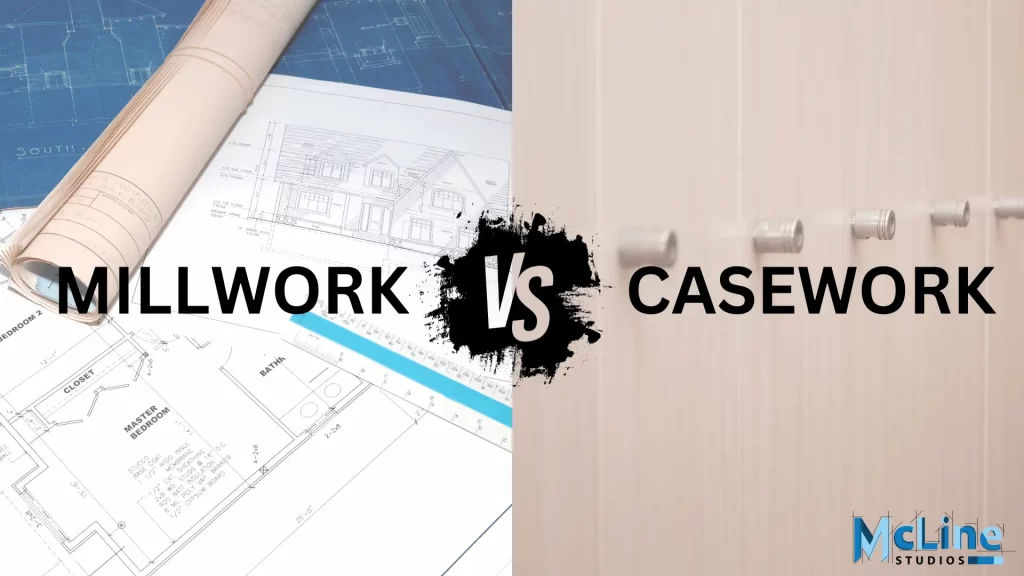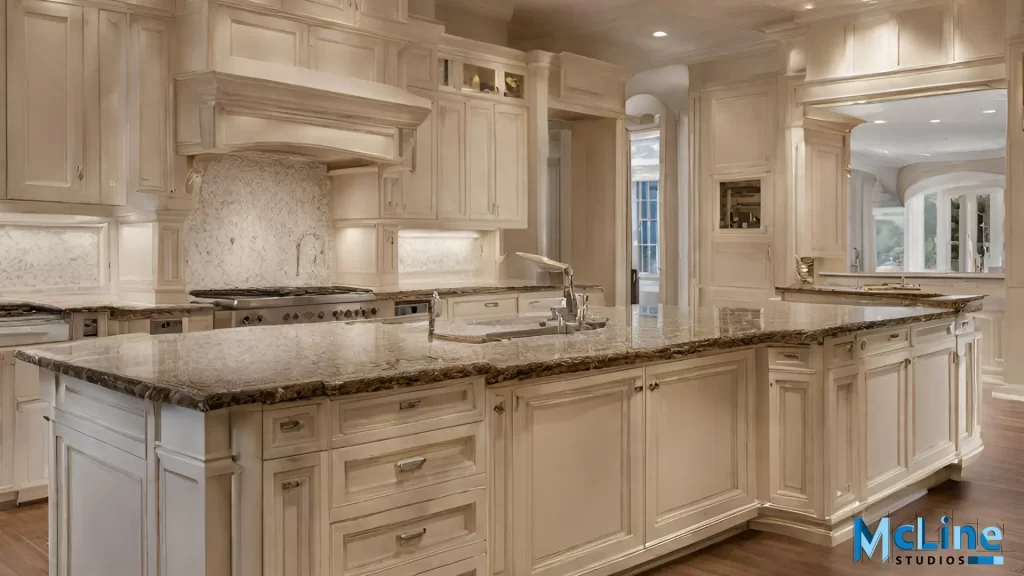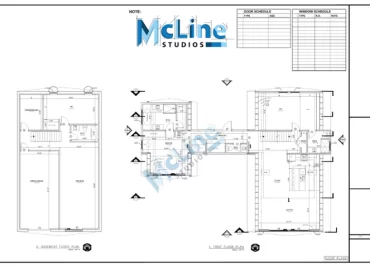When optimizing the functionality and aesthetics of your living or working space, your choices matter. One crucial decision revolves around the use of millwork and casework. Whether you’re renovating a kitchen, furnishing your office, or designing a custom-built closet, it’s essential to understand the differences between these two key components.
Millwork refers to custom-made wooden elements crafted on-site or in a workshop to fit specific spaces. It includes built-in bookshelves, crown moldings, and decorative wall panels. Millwork offers high customization and adds a unique, tailored touch to your interior.
In contrast, casework involves factory-built cabinetry and storage solutions, such as kitchen cabinets, bathroom vanities, and office workstations. Casework is known for its standardized sizing and quick installation, making it a practical choice for various settings.
In this article, we will explore the differences between millwork and casework, examining their pros and cons, cost considerations, and ideal use cases.
By the end, you’ll know how to make informed decisions about incorporating millwork and casework into your next project, ensuring a space that not only meets your needs but also reflects your style.

What is Millwork?
Millwork refers to custom-made woodwork items created in a mill or workshop. Skilled craftsmen or artisans typically build these items, emphasizing attention to detail and craftsmanship. Millwork includes various interior components like trim, moldings, doors, and architectural features such as mantels, staircases, and built-in furniture.
Examples of millwork include custom-built, ornate bookshelves, intricate fireplace mantels, and decorative moldings in a luxurious home library.
Advantages of Millwork
- Customization: Millwork shop drawings are highly customizable and tailored to the specific requirements of a project, ensuring each piece is unique and fits the space perfectly.
- Quality Materials: Millwork products are crafted from high-quality materials, such as hardwoods, veneers, and fine woods, ensuring durability and a polished appearance.
- Precision: Millwork drafting involves intricate detailing and precision work, making it ideal for decorative and ornamental elements in interior design.
- Skilled Craftsmanship: Skilled craftsmen or artisans create millwork items, giving them a handcrafted touch that distinguishes them from mass-produced alternatives.
- Interior Aesthetics: Millwork drawings are essential for enhancing the aesthetics of interior spaces, adding a touch of sophistication and elegance.
What is Casework?
Casework refers to pre-manufactured cabinets, shelving, and storage units designed for practical functionality. Casework is a more standardized solution, typically constructed in factories and delivered as pre-assembled or flat-pack components.
Casework is widely used in kitchens, bathrooms, offices, and other areas where storage and organization are key. Examples of casework include pre-manufactured kitchen cabinets, standardized countertops, and wall-mounted storage units in an office kitchenette.
Advantages of Casework
- Standardization: Casework is not custom-made but produced in standard sizes and configurations, making it a cost-effective and efficient storage solution.
- Material Variety: Casework can be made from various materials, including laminates, MDF, plywood, and particleboard, depending on the project’s budget and requirements.
- Quick Installation: Since casework comes pre-manufactured, it can be installed quickly and easily, saving time on the construction site.
- Practicality: Casework is designed with a focus on functionality, providing ample storage and organization solutions for various spaces.
Key Differences between Millwork and Casework
The choice between Millwork and Casework depends on the demand of the project. Still, there are some points we can discuss to understand what should you prefer between Millwork and Casework.
- Customization vs. Standardization
The most significant difference between millwork and casework is the level of customization. Millwork drafting is entirely customized to suit the specific dimensions and design requirements of a project.
In contrast, casework comes in predefined sizes and configurations, offering a more standardized solution.
- Craftsmanship vs. Efficiency
Millwork shop drawings are known for their artisanal craftsmanship and intricate detailing. It is an ideal choice when you want to add a unique, handcrafted touch to your interior spaces.
Casework, on the other hand, focuses on efficiency and functionality, making it a practical choice for areas where storage and organization are essential.
- Materials and Durability
Millwork is typically crafted from high-quality, durable materials like hardwoods and fine woods, ensuring longevity and a luxurious appearance.
Casework, while still functional, may be constructed from a range of materials, depending on the budget and purpose of the project.
What Should You Choose for Your Next Project: Millwork or Casework?
The decision between millwork and casework depends on the specific needs of your project, as well as your budget and design goals. Here are some scenarios in which one option might be more suitable than the other:
Millwork is ideal when:
- You are looking for a high-end, customized solution to enhance the aesthetics of your space.
- You require ornate architectural elements, such as intricate moldings, decorative mantels, or a custom-built staircase.
- You want to create a one-of-a-kind, luxurious interior with unique, handcrafted pieces.
Casework is a practical choice when:
- Quick installation is essential, such as in commercial spaces where minimizing downtime is critical.
- You require functional storage units like kitchen cabinets, bathroom vanities, or office shelving.
- You prefer the convenience of ready-made components that can be easily sourced and installed.
Conclusion
Millwork and casework are two distinct approaches to interior design and construction, each with its own set of advantages and considerations.
Ultimately, the decision between millwork and casework should align with your project goals and vision, ensuring that your interior spaces are both functional and aesthetically pleasing.
If you’re considering Millwork drafting services then McLine Studios is a perfect choice for you. McLine Studios is a Delaware, USA-based drafting service provider having experience of more than 17 years in the industry.




